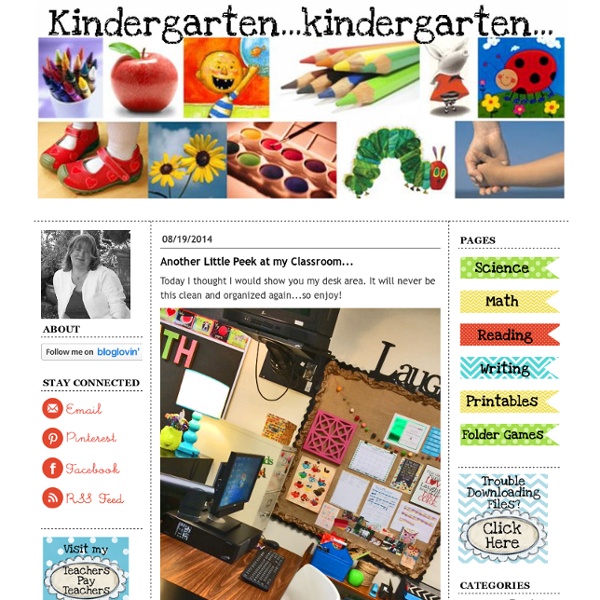



CanTeach What is Guided Math? - Guided Math Guided Math is similar to Guided Reading in that the teacher puts the students into small groups and the students work on specific standards being taught in centers around the room. You should try your hardest to have all the centers hitting the same topic. Students are placed in ability level groups and taught the standards of the curriculum. Download What is Guided Math Click on one of the sheets below for a guide to what guided math will look like in your class. Guided Math Planning Sheet Guided Math Planning Sheet 2 Download Guided Math Plan 3 The first thing I say is make it work for you. Day 1- Pretest, mini lesson on topic, go over centers, whole group activity to get them thinking about concept (acceleration). FOR PRETEST you could give a 5 question quiz to see what the kids know. Day 2- Centers ** Day 3- Centers (Students will be doing 2 centers each day. 25 minutes per center) ** Day 4- Centers (Aim for about 4-5 kids per group) **
Teaching with TLC: Create marbled fall leaves with shaving cream! Hi friends! I can't wait to share with you the marbled fall leaves my kids made today! As many of you already know, my children are hooked on the shaving cream art projects. Their addiction began with the Marbled Shaving Cream Eggs. But before I begin sharing the photos, I must confess that I may be suffering from a mild case of blogger's envy. First, I do not have a nice camera and probably will not for a l-o-n-g time. Second, I can no longer snap action shots. Last, my posts are usually brief and to the point. Are you still with me after all my rambling? Ecclesiastes 3:1 says, "There is a time for everything, and a season for every activity." Enjoy!
A Place Called Kindergarten Math Playground - Online Math Games that Give your Brain a Workout Spagetti, makaroner, hundra miljoner | film i skolan Spagetti, makaroner, hundra miljoner riktar sig till förskoleklass och årskurs 1 och är en pedagogisk fortsättning av ”Katten, musen, tiotusen”. Makaroner är en liten italiensk kvarterskrog någonstans i Sverige. Den drivs av servitrisen Bibbi och Kocken som har en förmåga att röra till det både i matlagningen och i matematiken. Att gästerna har speciella önskningar gör inte saken lättare. I restaurangköket finns också Mattemusen som bor på en hylla vid spisen och har ett och annat att göra med lösningen på dagens matematiska problem. De tio korta avsnitten är tematiskt uppbyggda med en handling som kretsar kring begrepp som antal, dubbelt och hälften, tid, mönster och volym. Handledning till serien hittar du här. Blomma, blad , en miljard är en matematikserie för de som går i år 2-3 Matteköping är en fridfull liten stad men under den lugna ytan pågår en maktkamp. En serie i tio avsnitt som visar praktiska matematikstrategier. Handledning till serien hittar du här.
Mrs. Spatafora’s Kindergarten Blog | Just another day in K! tallriksugglor PreK Numbers, Shapes, Colors Review To review all of the numbers, colors and shapes we learned as we went through our Letter of the Week curriculum, I made some fun review games! Note: If you missed it, don’t forget to do the A-Z Review also! Number Review: Clothespin Number Review: Write numbers on mini-clothespins and then have your child clip them on to the correct number of dots! 1-10 Number Sticker Sheets: This download includes numbers 1-10. Number Word cards: This download comes with the letters in the boxes like below and for more of a challenge I also added blank cards for each color word as well. Number Dot Cards: You can use these a few ways, simply count the dots and say the number, use a fun manipulative like mini-clothespins or pom-poms. Chicka Chicka 123 Cards: We cut out these small numbers & add them to our alphabet tree as we are learning them. Variation: Laminate and use as play-doh mats, or cut out and use as number lacing cards! Number Collage Worksheets: 0-9 worksheets are included. Shape Review:
Hur kan man använda läsförståelsestrategier på en faktatext? När det gäller faktatexter handlar det om att koppla på elevernas förkunskaper, att de får berätta vad de vet om det aktuella ämnet och delge varandra sina erfarenheter före vi börjar läsa. Eleverna ska också få möjlighet att berätta vad de tror att de kommer att få veta och varför de tror det. Viktigt när man läser faktatexter är också förmågan att plocka ut det viktigaste i texten genom nyckelord. Syftet: Att träna eleverna att innan läsningen aktivera sina kunskaper och att under läsningen plocka ut viktig information ur texten för att kunna sammanfatta det viktigaste. Läromedelstext hämtad ur Natur och Kulturs No-bok PULS Före läsningen Jag inleder med att visa hur jag gör när jag förutspår vad en text kommer att handla om: Jag tror att den här texten kommer att handla om bin eftersom den heter så. Därefter släpper jag in eleverna och de får berätta vad de vet om bin och vad de tror att vi kommer att få veta utifrån texten. Jag skriver upp mina och elevernas förutsägelser på tavlan.